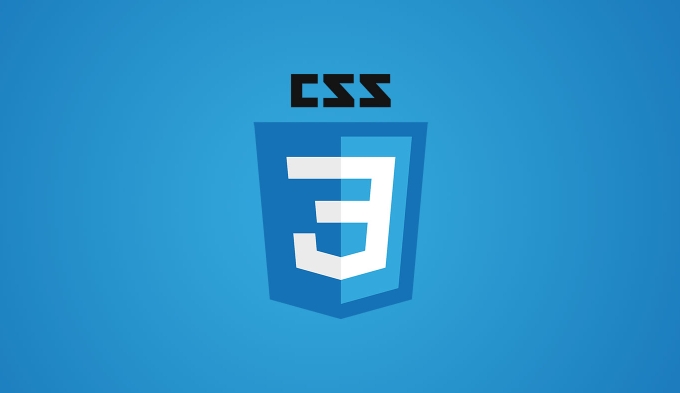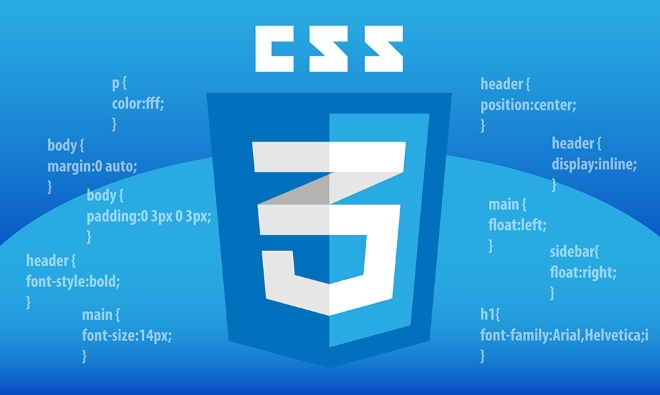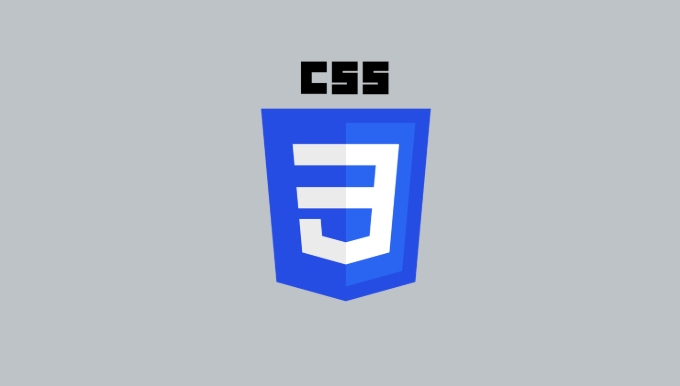BFC is an independent layout area in CSS, used to control element arrangement and isolate internal and external layout impacts. Its functions and creation methods are as follows: 1. Solve the problem of overlapping margins, avoid margin merging by dividing elements into different BFCs; 2. Clear the impact of floating, so that the parent container correctly wraps floating child elements; 3. Implement adaptive two-column layout, and use overflow: hidden and other features to make the sidebar and content area not interfere with each other; 4. Isolate the internal layout without being affected by external influences, improving structural clarity and controllability. Common ways to create include setting overflow, using floating, absolute positioning, inline-block, flex, or grid layout.

The Block Formatting Context (BFC) of CSS is a basic but easily overlooked concept in front-end layout. Understanding it can help you better control how page elements are arranged, especially when dealing with issues such as floating, overlapping margins, etc.

What is BFC?
BFC is an independent rendering area where block-level elements are laid out according to specific rules and will not affect the layout of external elements. You can imagine it as a "enchant". No matter how much the elements in this enchantment are tormented, they will not affect the outside world.

Common ways to create BFCs include:
- Set
overflowvalue to non-visiblevalues ??such asauto,hidden, etc. - Use float (
floatis notnone) - Absolute positioning element (
positionisabsoluteorfixed) - Inline block elements (
display: inline-block) - Elastic box (
display: flex) or grid layout (display: grid)
What practical problems can BFC solve?
Prevent margin overlap
In a normal document stream, the upper and lower margins of two adjacent block-level elements will be merged. Sometimes this is not the effect we want. Once these two elements are in different BFCs, their margins will not overlap.

For example, you have a structure like this:
<div class="box1">Box 1</div> <div class="box2">Box 2</div>
If .box1 and .box2 are in the same BFC and both have margin-tops set, margin merge may occur between them. But if you create a new BFC for one of the parent containers, this problem can be avoided.
Clear the effect of floating
The floating element would have detached the document stream, causing the parent container to collapse highly. But in a BFC container, it will also include floating elements and automatically extend the height.
For example: a div contains several float:left child elements. If the parent div does not form a BFC, its height may become 0. Just set the parent container overflow: hidden or other ways to trigger BFC, so that the parent container can correctly wrap the floating elements.
Adaptive two-column layout
Using the characteristics of BFC, it is easy to realize a fixed width on the left and an adaptive layout on the right.
For example, on the left is a floating menu bar, and on the right is the content area. The content on the right only needs to simply set overflow: hidden to automatically fill the remaining space and will not overlap with the floating elements.
When should you consider using BFC?
- When you find margin appears unexpected merge
- Floating elements cause layout confusion or parent element height collapse
- Want to quickly implement a simple two-column layout
- The internal layout of elements needs to be isolated and do not want to be affected externally
Basically these scenes. Although BFC looks a bit abstract, it is actually a tool, and it can save a lot of trouble if used well. To master it, there is no need to memorize it, the key is to understand its mechanism of action in different situations.
The above is the detailed content of Understanding CSS block formatting contexts. For more information, please follow other related articles on the PHP Chinese website!

Hot AI Tools

Undress AI Tool
Undress images for free

Undresser.AI Undress
AI-powered app for creating realistic nude photos

AI Clothes Remover
Online AI tool for removing clothes from photos.

Clothoff.io
AI clothes remover

Video Face Swap
Swap faces in any video effortlessly with our completely free AI face swap tool!

Hot Article

Hot Tools

Notepad++7.3.1
Easy-to-use and free code editor

SublimeText3 Chinese version
Chinese version, very easy to use

Zend Studio 13.0.1
Powerful PHP integrated development environment

Dreamweaver CS6
Visual web development tools

SublimeText3 Mac version
God-level code editing software (SublimeText3)

Hot Topics
 What is 'render-blocking CSS'?
Jun 24, 2025 am 12:42 AM
What is 'render-blocking CSS'?
Jun 24, 2025 am 12:42 AM
CSS blocks page rendering because browsers view inline and external CSS as key resources by default, especially with imported stylesheets, header large amounts of inline CSS, and unoptimized media query styles. 1. Extract critical CSS and embed it into HTML; 2. Delay loading non-critical CSS through JavaScript; 3. Use media attributes to optimize loading such as print styles; 4. Compress and merge CSS to reduce requests. It is recommended to use tools to extract key CSS, combine rel="preload" asynchronous loading, and use media delayed loading reasonably to avoid excessive splitting and complex script control.
 How to use Lotties in Figma
Jun 14, 2025 am 10:17 AM
How to use Lotties in Figma
Jun 14, 2025 am 10:17 AM
In the following tutorial, I will show you how to create Lottie animations in Figma. We'll use two colorful designs to exmplify how you can animate in Figma, and then I'll show you how to go from Figma to Lottie animations. All you need is a free Fig
 Breaking Boundaries: Building a Tangram Puzzle With (S)CSS
Jun 13, 2025 am 11:33 AM
Breaking Boundaries: Building a Tangram Puzzle With (S)CSS
Jun 13, 2025 am 11:33 AM
We put it to the test and it turns out Sass can replace JavaScript, at least when it comes to low-level logic and puzzle behavior. With nothing but maps, mixins, functions, and a whole lot of math, we managed to bring our Tangram puzzle to life, no J
 External vs. Internal CSS: What's the Best Approach?
Jun 20, 2025 am 12:45 AM
External vs. Internal CSS: What's the Best Approach?
Jun 20, 2025 am 12:45 AM
ThebestapproachforCSSdependsontheproject'sspecificneeds.Forlargerprojects,externalCSSisbetterduetomaintainabilityandreusability;forsmallerprojectsorsingle-pageapplications,internalCSSmightbemoresuitable.It'scrucialtobalanceprojectsize,performanceneed
 Does my CSS must be on lower case?
Jun 19, 2025 am 12:29 AM
Does my CSS must be on lower case?
Jun 19, 2025 am 12:29 AM
No,CSSdoesnothavetobeinlowercase.However,usinglowercaseisrecommendedfor:1)Consistencyandreadability,2)Avoidingerrorsinrelatedtechnologies,3)Potentialperformancebenefits,and4)Improvedcollaborationwithinteams.
 CSS Case Sensitivity: Understanding What Matters
Jun 20, 2025 am 12:09 AM
CSS Case Sensitivity: Understanding What Matters
Jun 20, 2025 am 12:09 AM
CSSismostlycase-insensitive,butURLsandfontfamilynamesarecase-sensitive.1)Propertiesandvalueslikecolor:red;arenotcase-sensitive.2)URLsmustmatchtheserver'scase,e.g.,/images/Logo.png.3)Fontfamilynameslike'OpenSans'mustbeexact.
 CSS Counters: A Step-by-Step Tutorial with Examples
Jun 12, 2025 am 10:31 AM
CSS Counters: A Step-by-Step Tutorial with Examples
Jun 12, 2025 am 10:31 AM
CSSCounters is a tool for creating automatic numbers. 1. Basic usage: define and operate counters through counter-reset and counter-increment, such as "SectionX." before h2. 2. Advanced usage: Use nested counters to create complex numbers, such as chapter and section numbers. 3. Notes: Ensure the counter is reset correctly, optimize performance, and simplify counter logic. 4. Best practice: clear naming, define counters in CSS, and use counter-increment and counter-reset reasonably.
 What is Autoprefixer and how does it work?
Jul 02, 2025 am 01:15 AM
What is Autoprefixer and how does it work?
Jul 02, 2025 am 01:15 AM
Autoprefixer is a tool that automatically adds vendor prefixes to CSS attributes based on the target browser scope. 1. It solves the problem of manually maintaining prefixes with errors; 2. Work through the PostCSS plug-in form, parse CSS, analyze attributes that need to be prefixed, and generate code according to configuration; 3. The usage steps include installing plug-ins, setting browserslist, and enabling them in the build process; 4. Notes include not manually adding prefixes, keeping configuration updates, prefixes not all attributes, and it is recommended to use them with the preprocessor.






